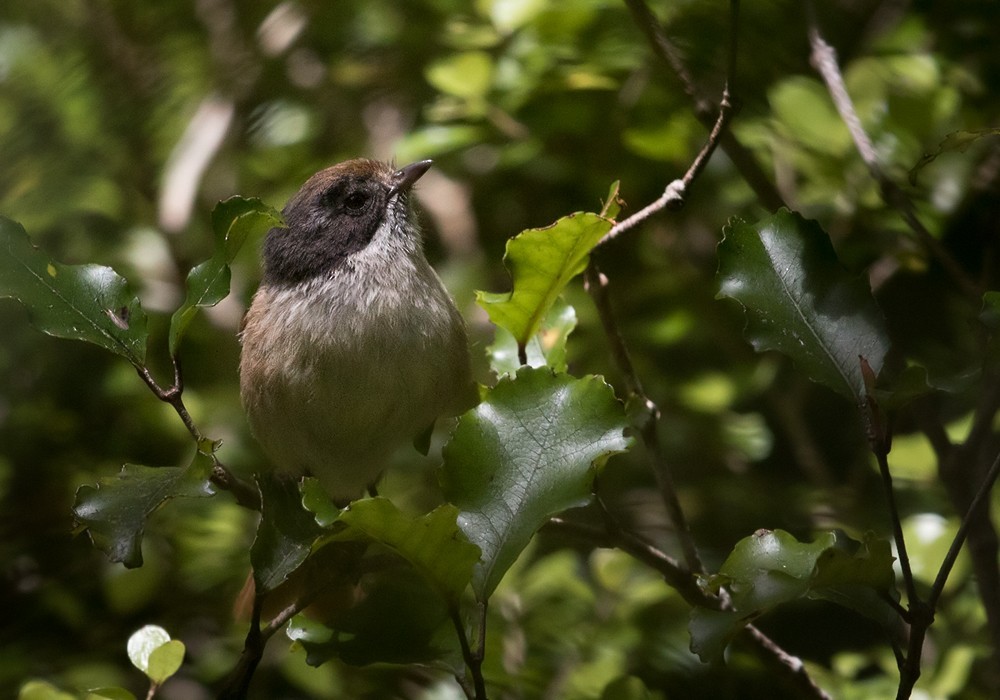Pipipi
A species of Finschia Scientific name : Mohoua novaeseelandiae Genus : Finschia
Pipipi, A species of Finschia
Botanical name: Mohoua novaeseelandiae
Genus: Finschia
Content
Description General Info
 Photo By Lars Petersson
Photo By Lars Petersson Description
A warm mix of brown and chestnut on the upper part of the bird whilst the lower section is a noticeably paler brown (Refer to Figure 1). The head is a mix of patches of chestnut brown and dark brown with spots and streaks. The face and zones behind it can be an ash/dark grey. The whiteish eye stripe is another distinguishing feature of brown creeper. The legs and beak are a pinkish – grey/brown colour. The tail is long, frayed and has a distinctive dark bar at the tip and the eyes are a dark reddish brown colour. The eggs are white – dark pink and are speckled reddish brown. They are about 2 cm long. The sexes and juveniles are very similar in terms of their appearance. You can tell the difference between the juveniles and adults before May as the juveniles have yellow bill flanges and dark brown legs. Juveniles are distinguishable by having a greyer head, i.e. less reddish-brown, in addition to lacking the white stripe behind the eye. The males weigh on average 13.5 g, whilst the females weigh on average 11.0 g. Brown creepers are about 13 cm in size. 
Size
14 cm
Nest Placement
Cavity
Feeding Habits
Pipipi predominantly consume invertebrates including beetles, moths, spiders, flies, and caterpillars. They also eat ripe fruits, particularly from native Coprosma plants, more so during autumn. Pipipi's feeding behaviors involve foraging for prey.
Habitat
Pipipi predominantly inhabits forested areas, including native and exotic beech, podocarp, pine, and scrub forests, along with regenerating forests and river flats. They are adaptable across a range of elevations, from sea level to alpine scrub zones, favoring areas with simple forest structures and dense canopies for nesting.
Dite type
Insectivorous
General Info
Feeding Habits
Bird food type
Behavior
Brown creepers are monogamous and display high rates of mate fidelity. They will usually only change mates if their previous mate dies as opposed to just general mate swapping or divorce. Pairs will strongly defend their territory during the breeding session and to a lesser extent during the rest of the year as well. Pairs will perform duets to maintain and strengthen their bond. In September females will build a nest out of bark, twigs, grass, moss, leaves, leaf skeletons and lichen, all of which is bound together with cobwebs and lined with grasses, feathers and wool. The nest is a deep cup shape and usually takes between 5–17 days to construct. The nest is built in dense canopy vegetation, scrub or low trees between 1m and 10m above the ground. The male will guard the female during this nest building phase as well as 2–3 days before the egg is laid. 
Distribution Area
Widely distributed but patchy in forests of the South Island, with some isolated populations persisting in places such as Banks Peninsula, Mt Peel, Hunters Hill and locations throughout Otago. Common on some off shore islands in Fiordland (Secretary, Resolution and Chalky) and Marlborough Sounds (D’Urville, Arapawa and Maud). Widely common on Stewart Island and its surrounding islands (Ulva and North-East Muttonbird). Brown creepers are particularly abundant on Cod Fish Island. 

 Photo By Lars Petersson
Photo By Lars Petersson Scientific Classification
Phylum
Chordates Class
Birds Order
Perching birds Family
Australasian warblers Genus
Finschia Species
Pipipi